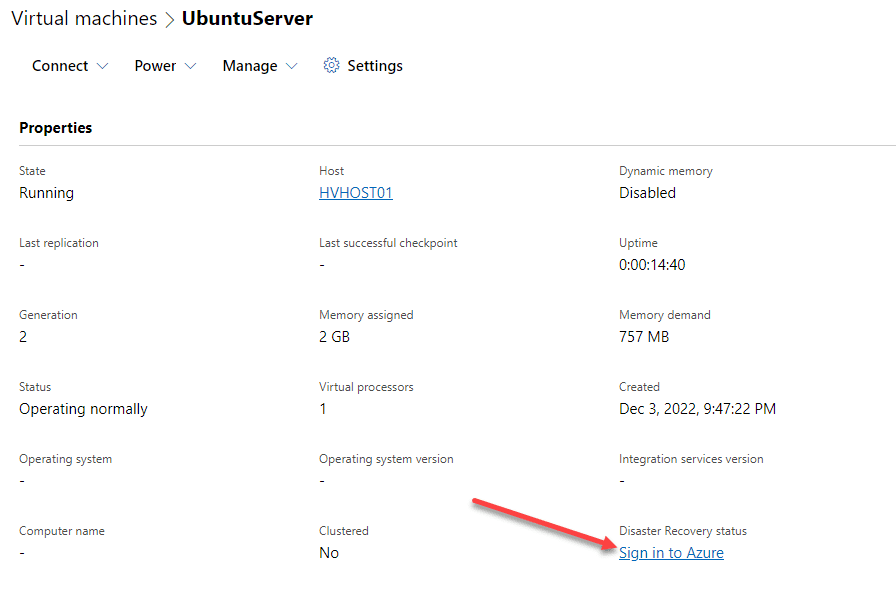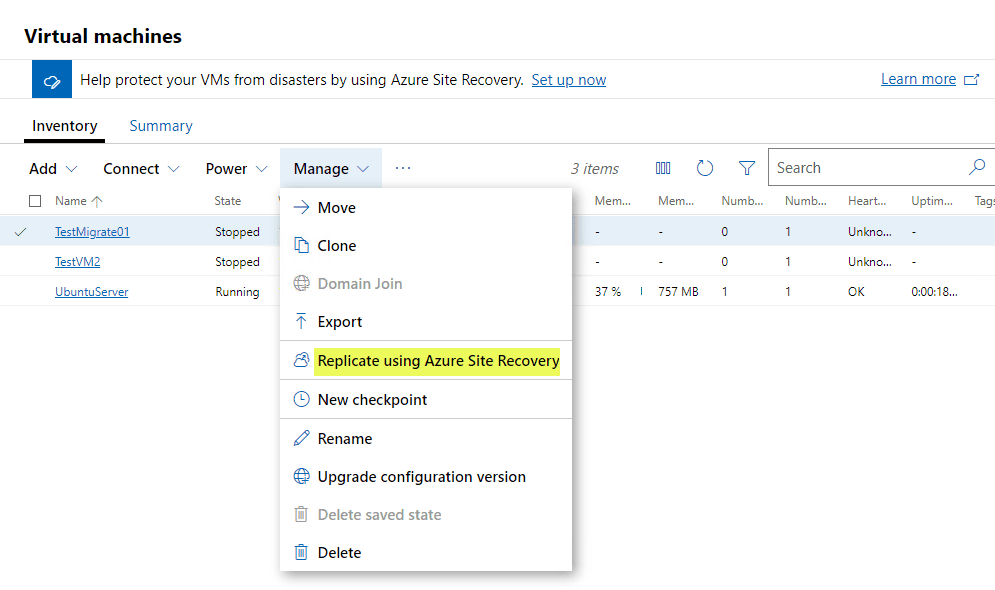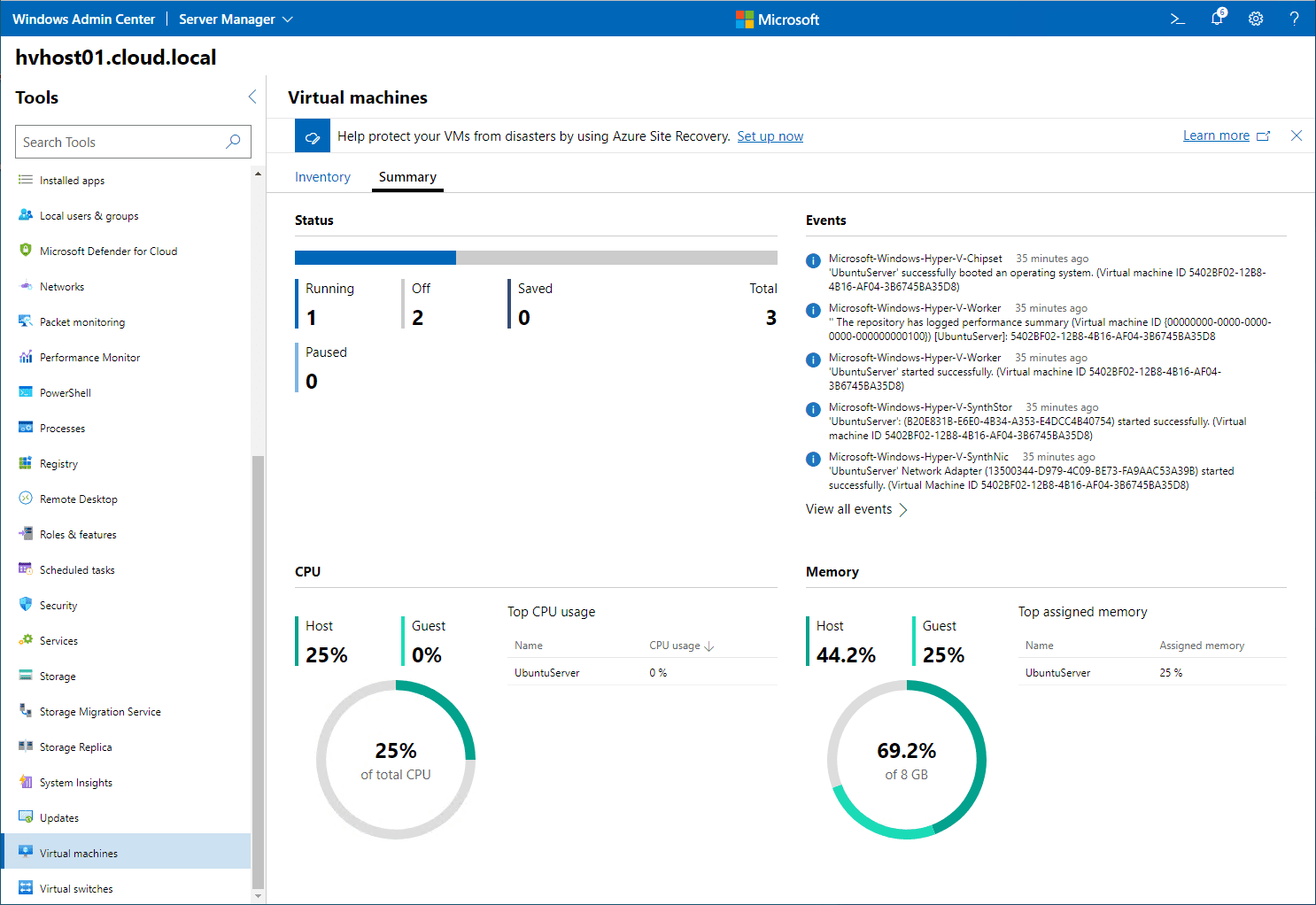Windows Admin Center is the next-generation tool from Microsoft to manage and configure Windows Server, including Microsoft Hyper-V. It is a modern web-based tool that provides a very Azure-like experience to interact with your Windows estate and provides great hybrid cloud features. With each release, Microsoft continues to add features and capabilities for managing your virtualized infrastructure running on Hyper-V. Let’s look at Hyper-V virtual machine management with Windows Admin Center for beginners.
Installing Windows Admin Center
Installing Windows Admin Center is straightforward and involves downloading an installer from Microsoft that no longer nags for your email information. In addition, Windows Admin Center is free to download and use with your Windows license. You can now download Windows Admin Center straight from the download link here:
Windows Admin Center | Microsoft
Run the installer for Windows Admin Center, and it will automatically configure the installation of WAC and the local web server for serving out the solution in gateway mode. Gateway mode is most likely the most desirable installation mode as it allows managing other servers from a single installation.
Manage Virtual Machines with Windows Admin Center
Windows Admin Center uses extensions that provide the underlying functionality working with various technologies, including Hyper-V. The Virtual Machines and Virtual Switches extensions are used for Hyper-V management.
Windows Admin Center management of virtual machines and switches has improved with each new release. The tool is fully featured for many management tasks in your Hyper-V environment. For example, you can manage the following with the Virtual Machines management extension in Windows Admin Center.
- Monitor Hyper-V host resources and performance
- View virtual machine inventory
- Create a new virtual machine
- Change virtual machine settings
- Live migrate a virtual machine to another cluster node
- Advanced management and troubleshooting for a single virtual machine
- Manage a virtual machine through the Hyper-V host (VMConnect)
- Change Hyper-V host settings
- View Hyper-V event logs
- Protect virtual machines with Azure Site Recovery
The virtual machine tool is available when managing servers with Windows Admin Center connected to a Server, Failover Cluster, or hyper-converged cluster.
You can also manage a wide range of Windows Server Hyper-V installations, including Windows Server 2012 and higher. Server Core installations arguably benefit even more from the management capabilities provided by Windows Admin Center since it adds the easy GUI management tools for Hyper-V and the OS in one location.
Once you have Windows Admin Center installed and the extensions are loaded, you will see the Virtual machines menu item listed. We can click this extension menu to display the Hyper-V virtual machines listed on the Inventory menu. From the Inventory screen, we can see the following:
- See a listing of all virtual machines running and stopped on the managed server
- You can view the VM state and information about the host server if you’re viewing virtual machines for a cluster. You can also view CPU and memory usage from the host perspective, including memory pressure, memory demand and assigned memory, and the virtual machine’s uptime, heartbeat status and protection status using Azure Site Recovery
- Create a new virtual machine in the interface
- Delete, start, turn off, shut down, pause, resume, reset, or rename a virtual machine. You can also save a virtual machine, delete a saved state, or create a checkpoint
- Change settings for a virtual machine
- You can connect to the VM console using VMConnect via the Hyper-V host
- Create VM replicas using Azure Site Recovery
- Perform operations in bulk, including Start, Shut down, Save, Pause, Delete, and Reset

As you would expect, you can manage all the power operations with the Windows Admin Center interface, including shut down, turn off, reset, pause, etc.

One of the great capabilities of Windows Admin Center management of virtual machines is the tight integration with Microsoft Azure. You will see many opportunities to integrate with Azure solutions in the Windows Admin Center console. On the virtual machine’s properties, under Disaster Recovery status, you can Sign in to Azure to begin integrating with Azure Backup.

Additionally, under the Manage menu for the virtual machine, you can choose to Replicate using Azure Site Recovery. Azure Site Recovery allows replicating on-premises Hyper-V virtual machines to the Azure cloud.

Checkpoint management is natively integrated with the Windows Admin Center interface. You can create new checkpoints and manage existing checkpoints. The checkpoint information view is informative and allows reverting to a specific checkpoint, renaming, or deleting checkpoints. It would also be great from this screen to be able to create new checkpoints as well. However, at this time, you have to do this from the main screen and not the virtual machine’s properties.

One of the great features of the Windows Admin Center Virtual machines management dashboard is the Summary screen. You get an excellent overview of your virtual machine estate on the summary screen. This overview includes the status of all virtual machines on the Hyper-V host. For example, note the following information you can obtain from the Summary screen.
- The number of VMs grouped by state – running, off, paused, and saved
- Recent health alerts or Hyper-V event log events. For HCI clusters, you will only see information for HCI hosts running Windows Server 2016 or later
- CPU and memory usage with host vs. guest breakdown
- A list of the top VMs consuming the most CPU and memory resources
- Live and historical data line charts for IOPS and IO throughput. HCI clusters running Windows Server 2016 and later. Historical data is only available for HCI hosts running Windows Server 2019 or later

Hyper-V virtual machine management with Windows Admin Center FAQs
Is Windows Admin Center free?
Microsoft notes that Windows Admin Center is free to download and use with a valid Windows license running on your Hyper-V host or HCI cluster nodes.
Can you manage Hyper-V virtual machines in Windows Admin Center?
Yes, there is very robust management of virtual machines using Windows Admin Center.
Can you manage HCI clusters with Windows Admin Center?
You can manage both Azure Stack HCI nodes and traditional Windows Failover Clusters with Windows Admin Center.
Wrapping up
Windows Admin Center provides many excellent management features for virtual machines running in your Hyper-V environment. It also makes Azure integration with your Hyper-V hosts easy to achieve with direct integrations with Microsoft Azure services like Azure Backup and Azure Site Recovery.
Read More:
Beginners’ Guide for Microsoft Hyper-V: Choosing the Right Hyper-V Virtual Machine Generation: Part 70
Follow our Twitter and Facebook feeds for new releases, updates, insightful posts and more.

